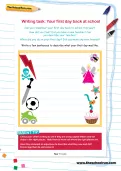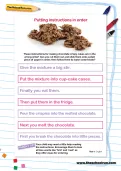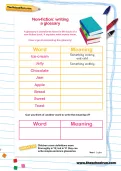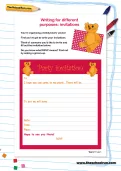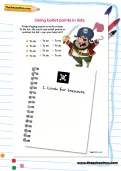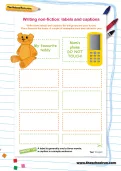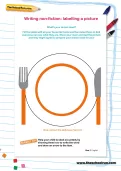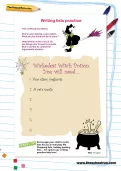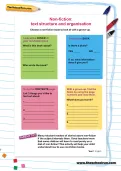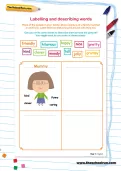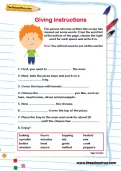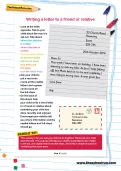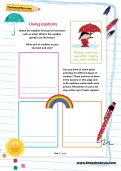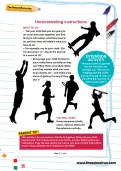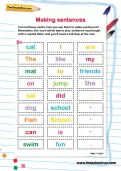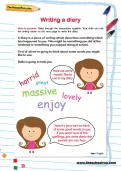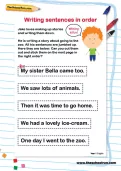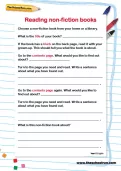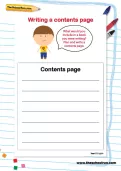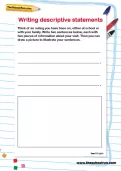A glossary is sometimes found in the back of a non-fiction book. It explains what words mean. Have a go at completing this glossary!
or
Register to add to your saved resources
Write some labels and captions for things around your house. Place them on the items. Remember: a label is generally one to three words; a caption is a simple sentence.
or
Register to add to your saved resources
Already a subscriber? to view this content.
What’s your dream meal? Fill this plate with all your favourite foods and then label them so that everyone can see what they are.
or
Register to add to your saved resources
Already a subscriber? to view this content.
Help Wendy Witch write a list of all the ingredients she’ll need to include in her new potion.
or
Register to add to your saved resources
Already a subscriber? to view this content.
Can you use words and pictures to describe your favourite TV programme? What was it called? What happened? What did you like about it?
or
Register to add to your saved resources
Already a subscriber? to view this content.
Choose a non-fiction book to read with your mum or dad. Can you use the contents and index pages? Use the spidergram to write about what you have learnt.
or
Register to add to your saved resources
Already a subscriber? to view this content.
Think of a special event that is coming up. Use this planning sheet to help you remember what will happen when. You can use pictures as well as words.
or
Register to add to your saved resources
Already a subscriber? to view this content.
Use non-fiction books to help your child understand text structure and organisation.
or
Register to add to your saved resources
Already a subscriber? to view this content.
Draw a picture of a family member then label it and add some words to describe them around the picture.
or
Register to add to your saved resources
Already a subscriber? to view this content.
Help your child understand how instructions are ordered by having them fill in the blanks on this worksheet to complete the recipe.
or
Register to add to your saved resources
This grammar worksheet will help your child to practise writing simple letters linked to a personal experience.
or
Register to add to your saved resources
Already a subscriber? to view this content.
This English worksheet will help your child to write captions and complete sentences, using a full stop at the end.
or
Register to add to your saved resources
Already a subscriber? to view this content.
This activity forms part of the English curriculum for speaking and listening. It will develop an understanding of the importance of giving instructions and listening carefully to instructions. The activity can be adapted for all ages and should be done with a parent or carer.
or
Register to add to your saved resources
Already a subscriber? to view this content.
Words for your child to cut out and then re-order into sentences. This activity will help them with understanding word order and how to use capitals and full stops.
or
Register to add to your saved resources
Already a subscriber? to view this content.
This worksheet encourages your child to write a diary entry using descriptive words.
or
Register to add to your saved resources
This worksheet gives sentences that can be cut up and re-ordered to help children with structuring text.
or
Register to add to your saved resources
Already a subscriber? to view this content.
This worksheet gives your children questions to prompt them to plan writing their own non-fiction book.
or
Register to add to your saved resources
Already a subscriber? to view this content.
Encourage your child to take out a non-fiction book from the library. These questions will prompt them to look for and use the features of the book, such as blurb and contents.
or
Register to add to your saved resources
Already a subscriber? to view this content.
Encourage your child to think about creating their own book by writing their own contents page.
or
Register to add to your saved resources
Already a subscriber? to view this content.
Encourage your child to write sentences about an outing they have been on. The sentences need to contain two pieces of information each.
or
Register to add to your saved resources
Already a subscriber? to view this content.
